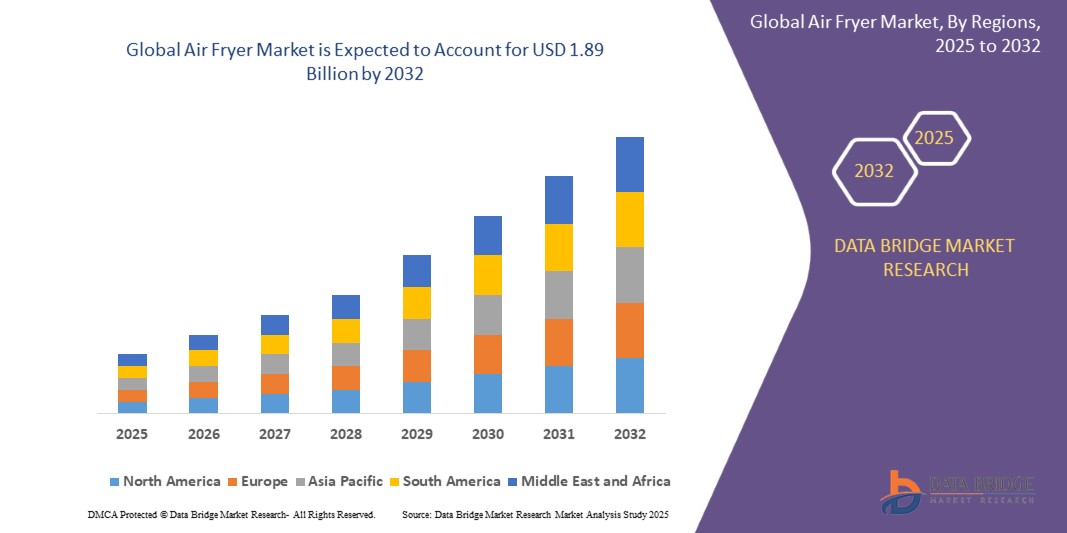Air Fryer Market: Growth, Innovations, and Future Trends
Introduction
The air fryer market has seen remarkable growth over the past decade, fueled by increasing consumer demand for healthier cooking alternatives, convenience, and energy efficiency. As people become more conscious of dietary choices and seek ways to reduce oil consumption, air fryers have emerged as a popular kitchen appliance.
Innovations such as smart connectivity, multi-functionality, and rapid cooking technology are reshaping the industry. This guest post explores the market size, trends, key players, challenges, and emerging opportunities driving the air fryer industry.
Market Overview and Growth Trends
Global Market Size and Growth Projections
- The global air fryer market was valued at $8 billion in 2023, with a projected CAGR of 10–12% from 2024 to 2030.
- The rise in health-conscious consumer lifestyles and demand for fast, oil-free cooking drives industry expansion.
- North America and Europe dominate sales, while Asia-Pacific and Latin America exhibit rapid growth.
Key Growth Drivers
- Health & Wellness Trends – Consumers seek low-fat cooking methods to support healthier eating habits.
- Rising Popularity of Home Cooking – Post-pandemic trends encourage easy-to-use cooking appliances.
- Energy Efficiency & Sustainability – Air fryers use less electricity and cook food faster, aligning with eco-friendly consumer priorities.
- Smart Technology & IoT Integration – AI-powered cooking apps and Wi-Fi-enabled air fryers enhance user convenience.
- Multi-Functionality & Compact Designs – Air fryers with baking, roasting, grilling, and dehydrating capabilities drive sales.
Market Segmentation
1. By Product Type
- Basket-Style Air Fryers – Traditional design, preferred for home cooking simplicity.
- Oven-Style Air Fryers – Larger capacity and multi-functional baking/roasting options.
- Hybrid Air Fryers & Smart Models – Advanced models with IoT connectivity and app-based cooking.
2. By End-User
- Households – Majority of sales come from families and individuals seeking healthier meal prep.
- Commercial & Food Service Industry – Restaurants integrate air frying for efficient cooking and menu expansion.
3. By Distribution Channel
- Retail Chains & Supermarkets – Traditional consumer purchase points.
- E-Commerce & Online Stores – Amazon, Walmart, and specialized kitchen appliance platforms fuel digital sales growth.
- Brand-Owned Stores & Specialty Shops – Direct-to-consumer sales enhance brand loyalty and customization options.
4. By Region
- North America – Leading market with strong consumer demand for smart cooking appliances.
- Europe – High adoption driven by sustainability concerns and food innovation.
- Asia-Pacific – Rapid growth due to urbanization and health-conscious trends.
- Latin America & Middle East – Expanding awareness and increasing affordability boost sales.
Competitive Landscape & Leading Brands
Major Air Fryer Manufacturers
- Philips – Pioneer in air frying technology, leading in premium and smart models.
- Ninja (SharkNinja) – Known for multi-functional and hybrid air fryer designs.
- Instant Brands (Instant Pot) – Specializes in air fryer-combo appliances and pressure cooking innovations.
- Cosori – Popular for affordable, high-performance models with smart features.
- Breville & Cuisinart – High-end air fryers with sleek designs and precision temperature control.
Competitive Strategies
- Product Innovation – Companies focus on AI-integrated cooking assistants and improved heating technology.
- Sustainable Manufacturing – Energy-efficient models and eco-friendly materials attract conscious consumers.
- Expansion into Emerging Markets – Localized pricing and marketing strategies boost sales in Asia-Pacific and Latin America.
Challenges Facing the Air Fryer Market
1. Market Saturation & Competition
- Increasing brands and models make differentiation difficult.
- Companies must prioritize innovation and unique features.
2. Consumer Education & Misconceptions
- Some buyers confuse air frying with deep frying, leading to unrealistic expectations.
- Marketing and instructional guides can improve adoption.
3. Product Durability & Quality Concerns
- Cheaper models may suffer from heating inconsistencies or wear-out issues.
- Brands focus on long-lasting, high-quality materials for better consumer trust.
4. Supply Chain & Pricing Challenges
- Raw material costs fluctuate, affecting production and pricing strategies.
- Advanced digital components increase manufacturing complexity.
Emerging Trends & Future Growth Opportunities
1. Smart & AI-Powered Air Fryers
- App-controlled cooking presets optimize meal preparation.
- AI-enhanced recipe suggestions and self-cleaning functions improve usability.
2. Sustainable & Energy-Efficient Models
- Low-energy consumption air fryers appeal to eco-conscious consumers.
- Recyclable packaging and materials create more sustainable options.
3. Expansion into Commercial Kitchens
- Restaurants integrate industrial air fryers to reduce oil usage and improve cooking efficiency.
- Food service suppliers target hybrid air fryer solutions.
4. Multi-Use Cooking Appliances
- Air fryers with baking, steaming, and slow-cooking capabilities compete with traditional ovens.
- Compact designs for urban kitchens expand accessibility.
5. E-Commerce & Subscription Models
- Brands enhance direct-to-consumer sales through digital platforms.
- Loyalty-based recipe subscriptions create recurring customer engagement.
Source: https://www.databridgemarketresearch.com/reports/global-air-fryer-market
Conclusion
The air fryer market continues to expand rapidly, driven by health-conscious consumer demand, technological advancements, and sustainability trends. As AI-powered cooking assistants, energy-efficient appliances, and multi-functional designs redefine kitchen

